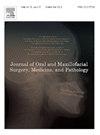Control of microbial contamination in dental unit waterlines: Effectiveness of neutral electrolytic water
IF 0.4
Q4 DENTISTRY, ORAL SURGERY & MEDICINE
Journal of Oral and Maxillofacial Surgery Medicine and Pathology
Pub Date : 2024-12-06
DOI:10.1016/j.ajoms.2024.11.012
引用次数: 0
Abstract
Objective
With an emphasis on nosocomial infection control, dental healthcare settings face challenges in managing and preventing microbial contamination, particularly in dental unit waterlines (DUWL). Currently, there are a lack of studies on clear measures to prevent contamination of DUWLs. Therefore, in this study, we investigated the effectiveness of neutral electrolytic water in controlling microbial contamination of DUWLs.
Methods
Water samples collected from DUWL were tested for Legionella species. Adenosine triphosphate levels were measured as indicators of contamination in the DUWL and water supply models. Heterotrophic bacterial counts were assessed before and after implementation of neutral electrolytic water purification systems. During dental treatment, plate sampling of heterotrophic bacteria was conducted before and after implementation of the neutral electrolytic water purification systems.
Results
Legionella spp. were not detected in the water samples collected from DUWL. However, samples collected using three-way syringes, gargle water, and high-speed handpieces indicated inadequate hygiene levels. Heterotrophic bacterial counts were significantly reduced after neutral electrolytic water purification systems were implemented. In the environmental survey conducted during dental treatment, no significant differences were found between tap water and neutral electrolytic water in terms of heterotrophic bacterial counts.
Conclusions
Our results demonstrate the effectiveness of neutral electrolytic water in reducing microbial contamination in DUWLs. Additionally, use of an extraoral vacuum aspirator during dental procedures can significantly reduce the risk of infection. These findings highlight the importance of implementing effective disinfection strategies to ensure patient safety in dental settings.
牙科设备输水管道微生物污染的控制:中性电解水的有效性
目的随着医院感染控制的重视,牙科保健机构在管理和预防微生物污染方面面临挑战,特别是在牙科单位水线(DUWL)中。目前,对于防止duwl污染的明确措施缺乏研究。因此,在本研究中,我们研究了中性电解水在控制duwl微生物污染方面的有效性。方法对武汉市水样进行军团菌检测。在DUWL和供水模型中,测量三磷酸腺苷水平作为污染指标。在实施中性电解水净化系统之前和之后评估异养细菌计数。在牙科治疗期间,在中性电解水净化系统实施前后对异养细菌进行平板取样。结果在武汉市水样中未检出沙门氏菌。然而,使用三向注射器、漱口水和高速手机采集的样本显示卫生水平不足。采用中性电解水净化系统后,异养细菌数量显著减少。在牙科治疗期间进行的环境调查中,自来水和中性电解水的异养细菌数量没有明显差异。结论中性电解水可有效降低duwl中微生物污染。此外,在牙科手术过程中使用口外真空吸引器可以显著降低感染的风险。这些发现强调了实施有效消毒策略以确保牙科环境中患者安全的重要性。
本文章由计算机程序翻译,如有差异,请以英文原文为准。
求助全文
约1分钟内获得全文
求助全文
来源期刊

Journal of Oral and Maxillofacial Surgery Medicine and Pathology
DENTISTRY, ORAL SURGERY & MEDICINE-
CiteScore
0.80
自引率
0.00%
发文量
129
审稿时长
83 days
 求助内容:
求助内容: 应助结果提醒方式:
应助结果提醒方式:


